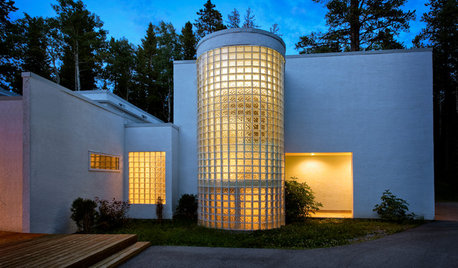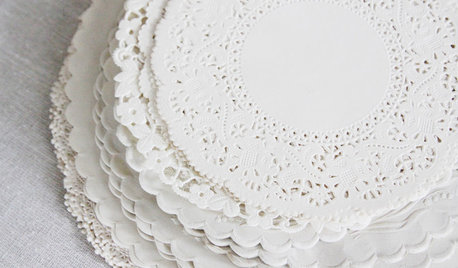More to fruit set than meets the eye
alan haigh
9 years ago
Related Stories

ENTERTAININGEye-Catching Centerpieces Beyond Flowers and Fruit
Use your imagination to create a tableau that reflects your surroundings, creates dramatic tension or elicits surprise
Full Story
ARCHITECTURECylinders — More Than Architects’ Pipe Dreams
They may look fanciful, but cylinders can serve practical purposes in architectural designs
Full Story
VALENTINE’S DAYHandmade Home: Doilies for More Than Valentines
Make instant stencils, banners, gift packaging and more from doilies old and new
Full Story
GARDENING GUIDESGreat Design Plant: Grow Blueberries for Their Fruit and More
Eastern gardeners should consider growing blueberry plants for their delicious fruits, bee-friendly spring blooms and brilliant fall foliage
Full Story
DECORATING GUIDESBranches and Twigs for More Than Just Decor
Think beyond the vase with twigged-out railings, gates, room dividers and more
Full Story
KITCHEN DESIGNRelocated Colonial Kitchen More Than Doubles in Size
Putting the kitchen in a central location allows for a big boost in square footage and helps better connect it with other living spaces
Full Story
FLOORSHow to Get a Tile Floor Installed
Inventive options and durability make tile a good choice for floors. Here’s what to expect
Full Story
SMALL HOMES28 Great Homes Smaller Than 1,000 Square Feet
See how the right layout, furniture and mind-set can lead to comfortable living in any size of home
Full Story
KITCHEN DESIGNAutomation Meets Innovation in the Newest Kitchen and Bath Products
Home features from closets to toilets are going touchless, remote controlled and more accessible than ever. See for yourself
Full StoryMore Discussions








fruitnut Z7 4500ft SW TX
alan haighOriginal Author
Related Professionals
Clemson Landscape Architects & Landscape Designers · Fort Lee Landscape Architects & Landscape Designers · Surprise Landscape Contractors · Annandale Landscape Contractors · Barrington Landscape Contractors · Belvedere Park Landscape Contractors · Burlington Landscape Contractors · East Chicago Landscape Contractors · Fountain Valley Landscape Contractors · Framingham Landscape Contractors · Lebanon Landscape Contractors · Mequon Landscape Contractors · Mission Viejo Landscape Contractors · Sammamish Landscape Contractors · West Chester Landscape Contractorsfruitnut Z7 4500ft SW TX
alan haighOriginal Author
alan haighOriginal Author